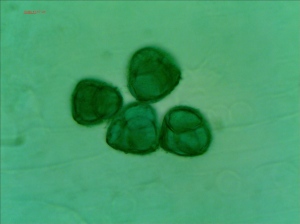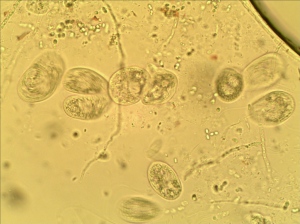Hello fellow microscope hobbyists, I am starting my new post at blogger.com. See the pictures of my latest field trip mineral collection from Chucky Gal Mountain, North Carolina here.
Archive for the ‘Projects’ Category
The blog is moving
Posted in Microscope, Projects, Uncategorized on June 6, 2011| Leave a Comment »
Insect collection Field Trip
Posted in Microscope, Projects, tagged Ample Scientific, Collecting Insects, Insect, Insect Nets, Microscope on June 27, 2010| Leave a Comment »
It’s summer. You can hear cricket chirping when you sit in your backyard listen to the surronding quietly. The kids are in the summer break. It’s perfect time to take kids to go on the fields to collect some insects and bring home for observation.
What we brought with us:
If you plan to preserve the specimen, a killing jar is better than the collection container that Megan took with her. She like to oberve them moving around so a collection container working just fine. The contain has a small opening allow you to put insects but more difficult for insects to get out.

Triangle Envelope made by semi-transparent paper. You can put butterfly in the envelope to prevent it damage the wing while trying to escape.
Of course, it is hot and humid during the summer. Don’t forget to bring sun cream, hat and plenty of water.
Insect collection net is the essential tool for collecting insect. The perfect method is the draw a number eight horizontally with the net’s opening pointing to the direction of moving direction. Let the net move through the area that you want to collect. Megan was on the first insect collection field trip. She is getting better use of the net. She has an excellent close-out move that close up the net to prevent the insect from escaping.
After we brought them home, we wanted to seem them in details. A stereo microscope (or so-called low power microscope) is perfect for this purpose.
In the picture is an Ample Scientific SM Plus Stereo Microscope. It equiped both top and bottom light. The observation surface is made of semi-reflectory mirrow which allows some top light to reflect from the bottom)
I made a simplified spreading board with styrophone with a central groove to allow the fat body to sit in. I pinned the butterfly through the middle of the thorax at the thickest part, slightly behind the base of the forewing then insert the pin into the center groove in the spreading board until the wings are level with the sides of the spreading board. With the aid of an insect pin, adjust the front wing by gently pulling it forward, until the rear margin is at a right angle to the body of the butterfly. Pull the hind wing forward until the front margin is hidden beneath the front wing, and temporarily anchor it in the same manner as the front wing. Once the wings are in position, I placed strips of paper over the wings; anchor them firmly to the board. Hopefully, the specimen will be ready in a week for display.
Put Pollen under Microscope #2 – comparing dry form and hydrated form
Posted in Projects, Techniques, tagged Ample Scientific, Dry form, Hydrated form, Microscope, Nexcope, Pollen on April 12, 2010| 2 Comments »
As I googled around the internet, I found many pollen pictures are in stained hydrated form. Out of curiosity, I wanted to compared my collection with what I found on the internet and my previous pollen photos. I collected some more flowers and pollens from air as well. The complete project can be found under project pages.
Pine Pollens
Oak Pollens

Oak Pollen in hydrated state at 400X stained with Malachite Green (As the oak pollens are hydrated, they become rounded and completely different from their dry form)
Apple pollens
Azalea Pollens
Stacked Photos
Pictures are taken with Tucsen TCA-3.0C CMOS Microscope Camera from Nexcope CM701 microscope with the eyepiece removed and replaced with Tucsen relay lens.
Culturing Protozoa
Posted in Projects, tagged Protozoa Culture on March 28, 2010| Leave a Comment »
Three weeks after I begin to culture the pond life, I finally saw the water of my “Carrot Soup” turned turbid. The density of the pond life in there is amazing.

























 Free Living FreshWater Protozoa by DJ Patterson
Free Living FreshWater Protozoa by DJ Patterson How to Know the Protozoa
How to Know the Protozoa Ecology and Classification of North American Freshwater Invertebrates by Thorp and Covich
Ecology and Classification of North American Freshwater Invertebrates by Thorp and Covich